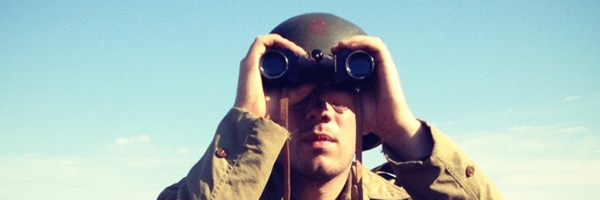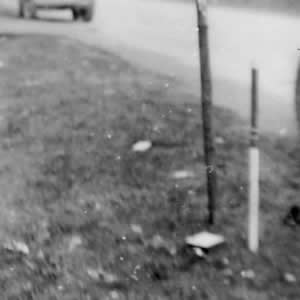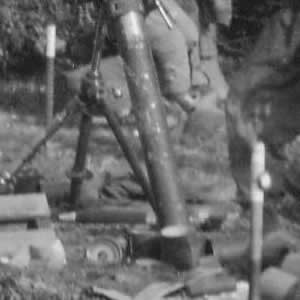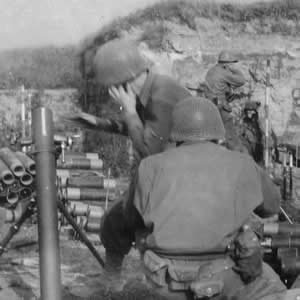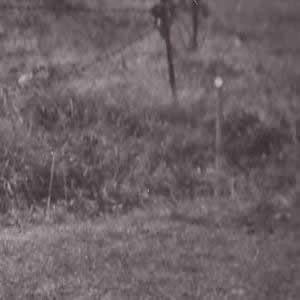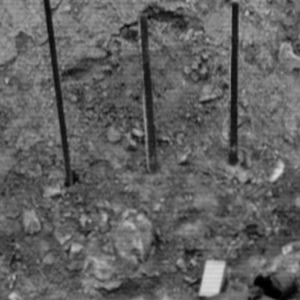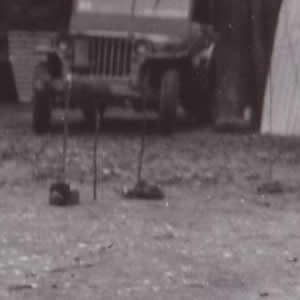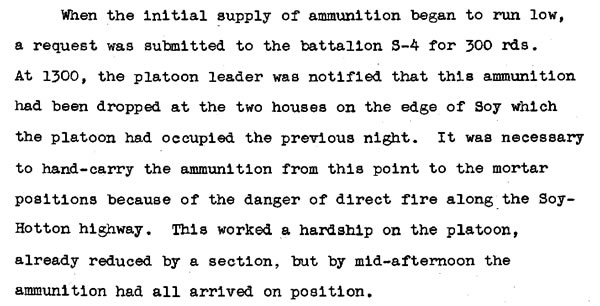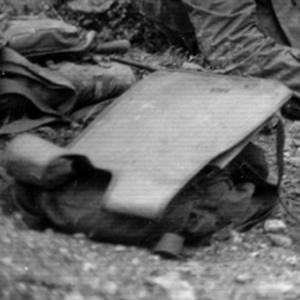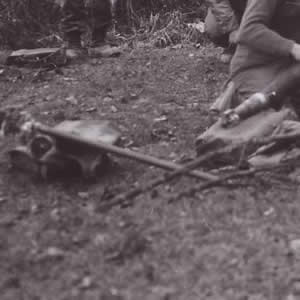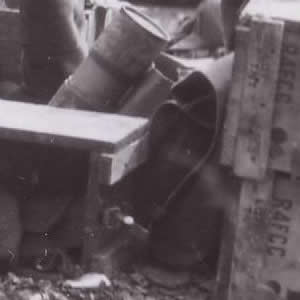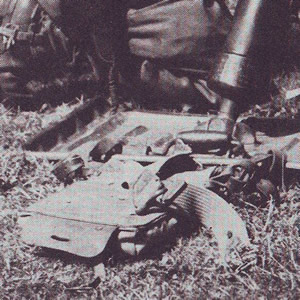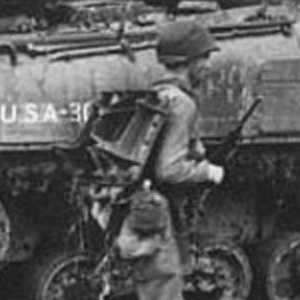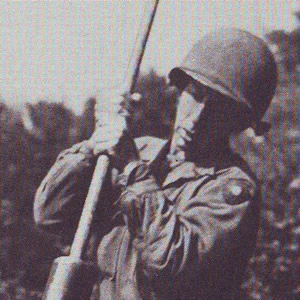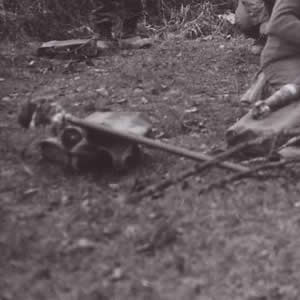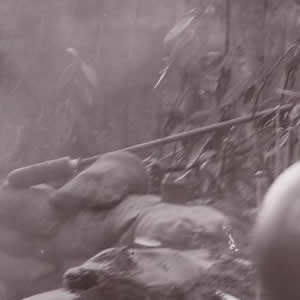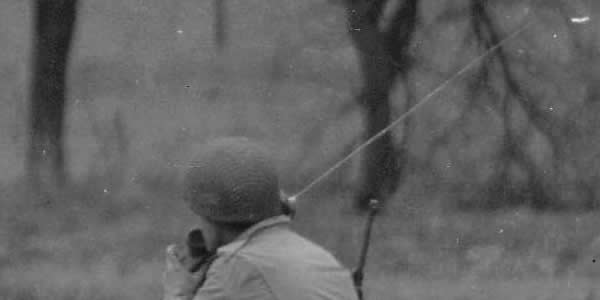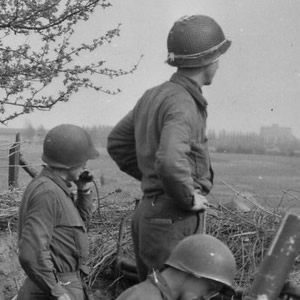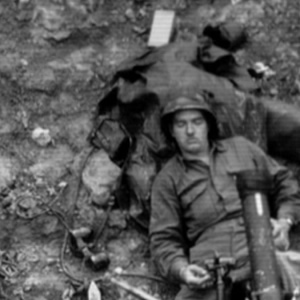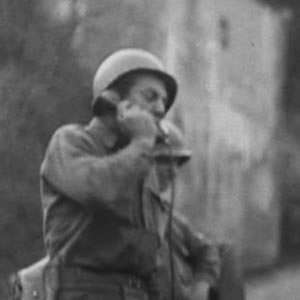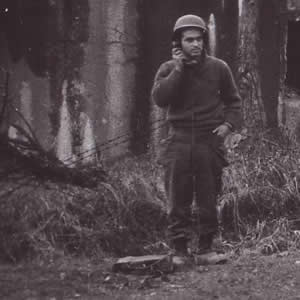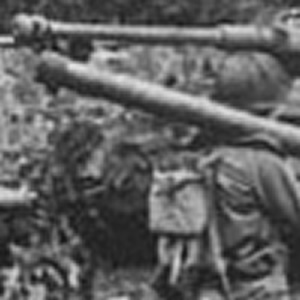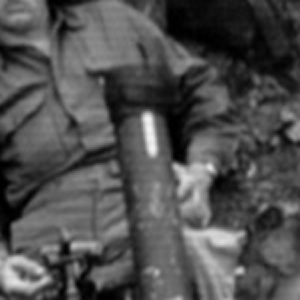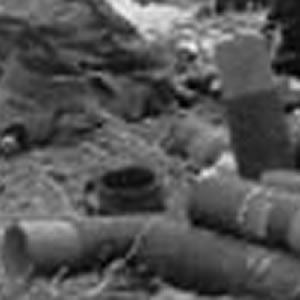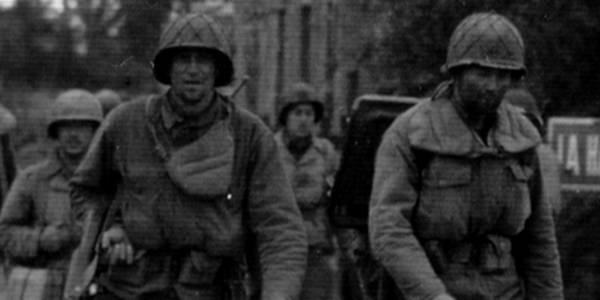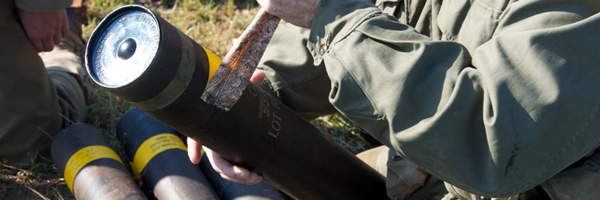Tableau Number 1
The 81mm Mortar Squad
Date: January 2013
Author: Chris Guska - 90th IDPG
Original Photographs - Key Observations
Aiming Stake Usage
The prescribed aiming stakes were the M5 (Aluminum) / M9 (Wood) 2' and M6 (Aluminum) / M8 (Wood) 6' stakes.
Aiming stakes - a fixed point - are fundamental to the operation of a mortar. This is a must have, in some form.
Issue stakes, supplemented with improvised aiming stakes are illustrated below. Luminous Discs are also evidenced. I'm assuming these discs were simply nailed to the wooden stakes.
Quote from Townsend, James M. CPTWhile I've made the decision for the sake of this article to show 4 examples - I did chose the ones below deliberately for what they illustrate. Based on the overall volume of photos I've examined over the years, the issued aiming stakes are well within the minority - and luminous discs being a rarity in photos.
The predominant type of aiming stake evidenced in wartime photos are improvised. A common trend is the usage of the long metal bolt that held together the cloverleaf bundles of ammunition. Wooden stakes, or even twigs are also quite common.
Ammo Vests
The Bag, Ammunition, M2 shows up sporadically in photos. Seemingly, they are more apparent early on in the campaign. A general trend I notice late 44 and into 45, is that the mortar sections appear to be having far more ammunition piled up ready to fire than possibly man portable.
Quote from Townsend, James M. CPTProvided that ammunition could not be directly trucked to the firing position, or the mortar platoon co located with a supply - hand carry was the remaining option.
Baseplate Backpack Carrier
While not terribly common in photos, I've been noticing more and more of the Strap, Carrying, M1 in the past few years of looking - now that I've got them on my mind.
If you're not able to move the mortar via vehicle, this certainly is a superior method of carrying the baseplate.
Interestingly, I have been unable to dig up any photos of the baseplate being transported on a packboard.
Cleaning Rods
Of the photos where cleaning rods do show up, they are universally the M8 wooden staff, with 4 prong hook - or a foreign / mop type that I am unfamiliar with. I've illustrated both the M8 with waste rags, as well as the unknown wooden type.
While I have no doubt there were plenty of cleaning rods around, for obvious necessity - they are somewhat scarce to find in photos.
Communications
The vast majority of photos prove the EE8 phone to be the means of communication used by 81mm Mortar sections. While a SCR536 does emerge from time to time, the ratio appears to be 10 to 1 just based on photos I have observed over the years.
EE8's being in the majority appears to be an issue of reliability of radios...
Quote from Short, James H. MAJ
Quote from Kappel, Carl W. CPT
Muzzle Covers
Until I took the time to actively look for muzzle covers - I was under the belief that they simply weren't used. Much to my surprise, once I started to hunt for them - they came out of the woodwork. While often difficult to differentiate from the ends of the M36 and M37 fiber containers, the Cover, Muzzle, M307 certainly saw service.
Shoulder Pads
Unless in motion, the trend for mortar crews appears to be "dump the gear" as soon as you're in position and ready to go. They're somewhat annoying to wear unless you're actively using them. They drape around and get in the way, with the connector straps finding ways to chafe your neck.
Shoulder pads do certainly show up, but similar logic to the ammo vests can be applied. As the shift to motorized transport occurred, fewer and fewer pads are seen in photos.
Introduction
Section 1: By the book - TO&E
Section 2: Notes from the manuals on equipment
Section 3: Original Photographs - Key Observations (you are here)
Section 4: Preparing for Fire - Operational Concepts
Section 5: Conducting Fire - Modern Interpretation
90th IDPG Original Research



